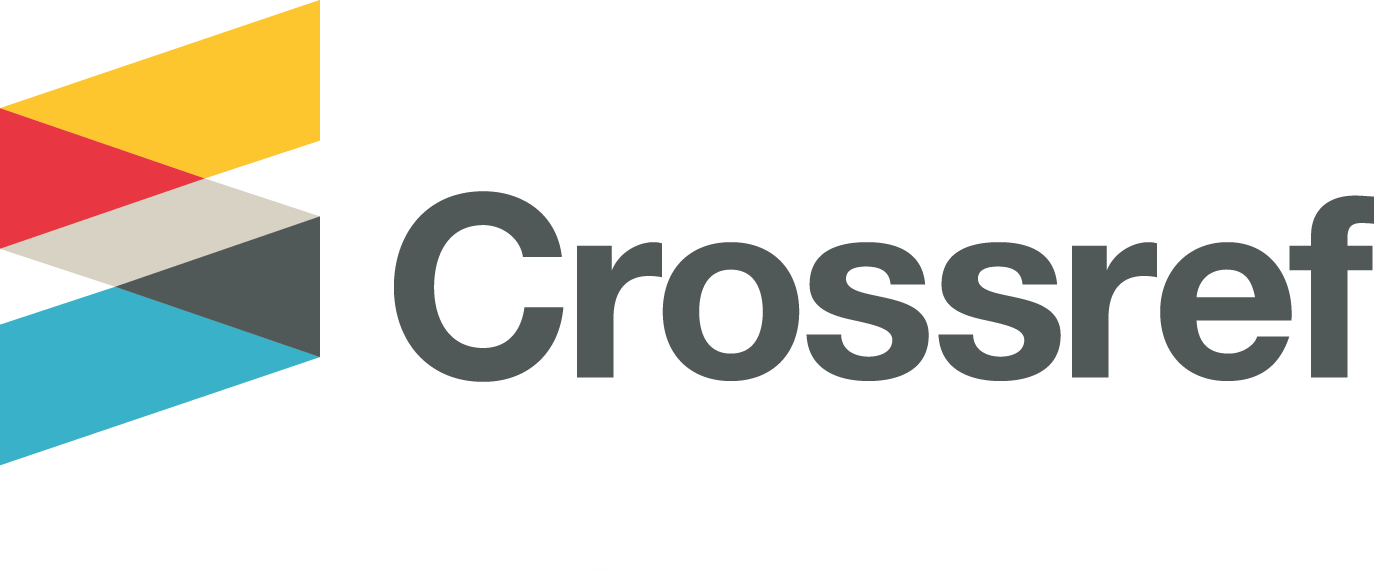Mengenal Dasar-Dasar Emosi Dalam Menghadapi Pandemi
Abstract
Artikel ini membahas pentingnya mengenali dan memahami dasar emosi dalam diri, khususnya dalam konteks pandemi. Mengenal emosi, merupakan upaya individu untuk merespon apa yang terjadi pada dirinya. Respon ini bersifat alamiah dan natural terjadi pada manusia, tetapi jika kita bisa mengenali dan mengelolanya maka akan besar dampaknya terhadap kehidupan kesehatan mental sehari-hari. Artikel ini merupakan bagian dari upaya mengedukasi masyarakat dalam betuk pengabdian masyarakat menggunakan metode service learning. Diharapkan dengan mengenali dan memahami dasar-dasar psikologis individu dalam merespon melalui emosi, masyarakat Indonesia bisa lebih sejahtera dan bahagia walaupun dalam kondisi pandemi.
Keywords
Full Text:
PDFReferences
Atkinson, Rita.L., Atkinson, Richard. L., Smith, Edward. L., & Bem, D. J. (n.d.). Introduction to Psychology (11th ed.). harcourt brace and company.
Barry, j. M. (2005). 1918 revisited: Lessons and suggestions for further inquiry. S. L. Knobler, A Mack, A Mahmoud, & S. M. Lemon (Eds.).
Barry, M. M. (2009). Addressing the determinants of positive mental health: concepts, evidence and practice. International Journal of Mental Health Promotion, 11(3), 4–17.
Bowcott, O. & Carrell, S. (2009). Swine flu website overwhelmed by demand as new cases double in a week. from:%0Ahttp://browse.guardian.co.uk/search?search= per cent22Sir+Liam+Donaldson%0Aper cent22+16+July&sitesearch-radio=guardian
Caley, P., Philp, D. j., & McCracken, K. (2008). Quantifying social distancing arising from pandemic influenza. Journal of the Royal Society Interface, 5, 631–639.
Canadian Health Services Research Foundation. (2016).
Carlson, N. R. (2010). Psychology : The Science of Behavior. Pearson Education Publisher.
CDC. (2007). Centers for Disease Control (CDC).
Cheng, Y, -S. (2004). A measure of second language writing anxiety: Scale development and preliminary validation. Journal of Second Language Writing, 13, 313–355.
CHENG, S. K. W., WONG, C. W., TSANG, J., And, & WONG, K. C. (2004). Psychological distress and negative appraisals in survivors of severe acute respiratory syndrome (SARS). 1187–1195. https://doi.org/https://doi.org/10.1017/S0033291704002272
Crosby, A. W. (2003). America’s forgotten pandemic: the influenza of 1918. Cambridge University Press.
Danielle K Kilgo, Joseph Yoo, T. J. J. (2018). Spreading Ebola panic: Newspaper and social media coverage of the 2014 Ebola health crisis. Health Communication.
Desclaux, Diop, D. (2017). Fear and Containment Contact Follow up Perceptıons and Social Effects in Senegal and Guİnea. The Politics of Fear Médecins sans Frontières and the West African Ebola Epidemic, OXFORD UNIVERSITY PRESS, 209–234.
Douglas, K. M., Sutton, R. M., & Cichocka, A. (2017). The psychology of conspiracy theories. Current Directions in Psychological Science, 26(6), 538–542.
Douglas, K. M., Uscinski, J. E., Sutton, R. M., Cichocka, A., Nefes, T., Ang, C. S., & Deravi, F. (2019). Understanding conspiracy theories. Political Psychology, 40, 3–35.
Douglas, P. K., Douglas, D. B., Harrigan, D. C., & Douglas, K. M. (2009). Preparing for pandemic influenza and its aftermath: mental health issues considered. International Journal of Emergency Mental Health, 11(3), 137.
Ekman, P., & Davidson, R. J. (Eds. ). (1994). Series in affective science.The nature of emotion: Fundamental questions. Oxford University Press.
Ekman, P. & Friesen, W., V. (2003). Unmasking the face. MA: Malor Books.
Epstein, J. (2003). focused on understanding how zoonotic pathogens circulate in wildlife, mechanisms of spillover and how to disrupt those mechanisms to prevent outbreaks. https://www.publichealth.columbia.edu/people/our-faculty/jee2103
Group, W. H. O. W. (2006). Nonpharmaceutical interventions for pandemic influenza, national and community measures. Emerging Infectious Diseases, 12(1), 88.
Herrera-Valdez, M. A., Cruz-Aponte, M., & Castillo-Chavez, C. (2011). Multiple outbreaks for the same pandemic: Local transportation and social distancing explain the different" waves" of A-H1N1pdm cases observed in México during 2009. Mathematical Biosciences & Engineering, 8(1), 21.
Honigsbaum, M. (2009). Living with Enza: The forgotten story of Britain and the greatflu pandemic of 1918.
Kanadiya, M. K., & Sallar, A. M. (2011). Preventive behaviors, beliefs, and anxieties in relation to the swine flu outbreak among college students aged 18–24 years. Journal of Public Health, 19(2), 139–145.
Lazarus, R. S., & Lazarus, R. S. (1991). Emotion and adaptation. Oxford University Press on Demand.
Lee, T.H., et al. (20014). Testing for SARS-CoV-2: Can We Stop at Two? Clin Infect Dis.
Lewis, M. E. (2008). The Handbook of Emotion. The Guilford Press.
Nippani, S., & Washer, K. M. (2004). “SARS: A non-event for affected countries’’ stock markets?” Applied Financial Economics,.” 14(15), 1105–1110.
Organization, W. H. (2004). Summary of probable SARS cases with onset of illness from 1 November 2002 to 31 July 2003. Http://Www. Who. Int/Csr/Sars/Country/Table2004_04_21/En/Index. Html.
Pettigrew, E. (1983). The silent enemy: Canada and the deadly flu of 1918. Saskatoon: Western Producer Prairie Books.
Plutchik, R. (1980). A general psychoevolutionary theory of emotion. In Theories of emotion (pp. 3–33). Elsevier.
Plutchik, R. E., & Conte, H. R. (1997). Circumplex models of personality and emotions.
Quick, J. D., & Fryer, B. (2018). The end of epidemics: the looming threat to humanity and how to stop it. St. Martin’s Press.
Robert, P. (2002). Emotions and Life: Perspectives from Psychology, Biology, and Evolution. American Psychological Association, Washington DC.
Rubin, G. J., Amloˆt, R., Page, L., & Wessely, S. (2009). Public perceptions, anxiety and behavioural change in relation to the swine flu outbreak: A cross-sectional telephone survey. British Medical Journal, 339, b2651. https://doi.org/doi:10.1136/bmj.b2651
Schoch-Spana, M. (2004). Lessons from the 1918 pandemic influenza: Psychosocial consequences of a catastrophic outbreak of disease. Bioterrorism: Psychological and Public Health Interventions, 38–55.
Shultz, J. M., Baingana, F., & Neria, Y. (2015). The 2014 Ebola outbreak and mental health: current status and recommended response. Jama, 313(6), 567–568.
Shultz, J. M., Espinel, Z., Flynn, B. W., Hoffman, Y., & Cohen, R. E. (2008). DEEP PREP: all-hazards disaster behavioral health training. Tampa, Florida: Disaster Life Support Publishing.
Sofia, L., Ramadhani, A., Putri, E. T., & Nor, A. (2020). Mengelola Overthinking untuk Meraih Kebermaknaan Hidup. PLAKAT (Pelayanan Kepada Masyarakat), 2(2), 118. https://doi.org/10.30872/plakat.v2i2.4969
Sternberg, R. J. (2001). Psychology: In search of the human mind. Wadsworth Publishing.
Strongman, K. (2003). The psychology of emotion. John Wiley & Sons, Ltd.
Taylor, S., & Asmundson, G. j. G. (2004). Treating health anxiety. Guilford.
Taylor, S. (2019). Anxiety sensitivity. In j. S. Abramowitz & S. M. Blakey (Eds.), Clinical handbook of fear and anxiety: Psychological processes and treatment mechanisms. American Psychological Association.
Taylor, S. E., & Brown, J. D. (1988). Illusion and well-being: a social psychological perspective on mental health. Psychological Bulletin, 103(2), 193.
Taylor, S. (2017). Clinician’s guide to PTSD (2nd ed). Guildford.
Taylor, Steven, & Asmundson, G. J. G. (2017). Treatment of health anxiety. In In E. Storch, j. S. Abramowitz, & D. McKay (Eds.), Handbook of obsessive-compulsive disorders: Vol. 2 Obsessiv (pp. 977–989). Wiley.
Taylor, Steven, Asmundson, G. J. G., & Coons, M. J. (2005). Current directions in the treatment of hypochondriasis. Journal of Cognitive Psychotherapy, 19(3), 285–304.
Taylor, Steven, Zvolensky, M. J., Cox, B. J., Deacon, B., Heimberg, R. G., Ledley, D. R., Abramowitz, J. S., Holaway, R. M., Sandin, B., & Stewart, S. H. (2007). Robust dimensions of anxiety sensitivity: development and initial validation of the Anxiety Sensitivity Index-3. Psychological Assessment, 19(2), 176.
Tyrer, P. (2018). Accurate recording of personality disorder in clinical practice. BJPsych Bulletin, 42(4), 135–136.
Van Den Bulck, J., & Custers, K. (2009). Television exposure is related to fear of avian flu, an Ecological Study across 23 member states of the European Union. European Journal of Public Health, 19(4), 370–374. https://doi.org/10.1093/eurpub/ckp061
Wendy E Parmet, M. S. S. (2017). A panic foretold: Ebola in the United States. Critical Public Health, 27(1), 148–155.
Wheaton, M. G., Abramowitz, j. S., Berman, N. c., Fabricant, L. E., & O. (2012). Psychological predictors of anxiety in response to the HINl (swine flu) pandemic. Cognitive Therapy and Research. 36, 210–218. https://doi.org/https://doi.org/doi:l0.l007/s10608-011-9353-3
WHO. (2005). WHO checklist for influenza pandemic preparedness planning. World Health Organization.
WHO. (2008). WHO outbreak communication planning guide. WHO.
WHO. (2010a). Pandemic (H1N1) 2009. Frequently asked questions: What can I do?
WHO. (2010b). What is a pandemic? http://www.who.int/ csr /disease/ swine flu/frequently _asked_ques tions/pandemic/en/,
WHO. (2012). Vaccines against influenza WHO position paper. WeeklY Epidemiological Record.
WHO. (2019). Ten threats to global health in 2019. https://www.who.int/emergencies/ten-threats-to-globalhealth-
William M McDonnell , Douglas S Nelson, & J. E. S. (2012). Should we fear “flu fear” itself? Effects of H1N1 influenza fear on ED use. American Journal of Emergency Medicine, 30. https://doi.org/doi:10.1016/j.ajem.2010.11.027
DOI: http://dx.doi.org/10.30872/plakat.v3i1.5598
Refbacks
- There are currently no refbacks.
Copyright (c) 2021 Muhammad Zain Permana

This work is licensed under a Creative Commons Attribution-ShareAlike 4.0 International License.
Plakat : Jurnal Pelayanan Kepada Masyarakat Published by Faculty of Social and Political Siences, University of Mulawarman, Samarinda, East Kalimantan and This work is licensed under a Creative Commons Attribution-ShareAlike 4.0 International License.
________________________________________________
Plakat : Jurnal Pelayanan Kepada Masyarakat
Faculty of Social and Political Siences, University of Mulawarman
Jl. Muara Muntai Kampus Gn. Kelua Samarinda 75411
Phone: +62 813 35350368
E-Mail: plakat@fisip.unmul.ac.id

















